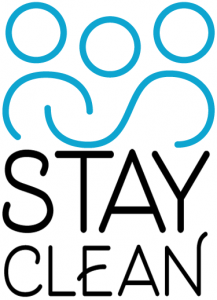We Don’t Understand The Problem of Addiction
October 15, 2021 By Gene Gilchrist, Ph.D., Chief Executive Officer
By Gene Gilchrist, Ph.D., Chief Executive Officer
Stay Clean
gene.gilchrist@stayclean.com
The seeming increase in reports from the press about alcohol and drug use and abuse is a double-edged sword. On the one hand, raising awareness of substance use and substance use disorder creates opportunities for the person suffering the disease and/or their loved ones to act, and creates a greater imperative for public action. On the other hand, these same reports unintentionally reinforce long held attitudes about alcohol and drug use and abuse that create barriers to access to treatment or, worse, reinforce stereotypes that prevent the addict from seeking help.
We all have read these stories, but to make the point let us review one. Specifically, “Detroit drug pipeline targets North Dakota Native Americans. How they’re fighting back”; Story by Beth Warren, Photos by Alton Strupp, September 24, 2021, Louisville Courier Journal. This is an extraordinarily important and professionally written article. Ms. Warren reviews the story of a Native American woman introduced to fentanyl following an injury who subsequently developed an addiction. The article includes reports of the drug cartels that supply the reservation on which the woman lived and died. “The biggest problem we’re experiencing is the Detroit connection, Detroit gangs,” reports the Bismarck, ND police official.
An important and informative report. Fentanyl, a Schedule II narcotic, is increasingly popular and increasingly supplied by secondary sellers, and is partially responsible for the increase in overdose deaths during Covid. However, are the other messages contained in the story familiar? The report,
- Involves a young female
- Describes a woman who is an ethnic minority
- Discusses the North Dakota reservation creating images of poverty
- Involves reports of drug cartels including Cártel Jalisco Nueva Generación
- Engages the Bismarck police department making this a “crime” story
- Involves the most recently popular drug in the American consciousness
- Reports about a fatal overdose
None of this is incorrect or problematic in itself. It is accurate, important, and promoting all of this is a service to the public. In the process, however, it also reinforces stereotypes about young, ethnic, poor people and drug cartels when the majority of drug use, abuse and addiction in America involves a much broader portion of the American public. Do these impressions paint a completely accurate picture of addiction in America? To the extent that they do not, do these skewed impressions also create a barrier to the majority of substance abusers and addicts to seek and find treatment? Do these skewed impressions create a barrier to an effective, broad based approach to addiction and recovery?
Consider the 2015 member survey from Narcotics Anonymous. The report notes that the membership was:
- Average age 48
- 59% male, 41% female
- 91% employed, enrolled in school, parenting or retired
- Ethnicity: 74% Caucasian, 11% African American, 6% Hispanic, 3% Asian American & 1% Native American
Allowing that this is not a random sample of drug addicts but a report from among those in recovery, and the biases that attend, the report shows that NA members, self-described drug addicts, are not young, ethnic, unemployed and crime involved, but match the American population to a great extent. We do not focus on the over representation of whites in this survey as it may reflect unequal access to treatment and, therefore, to recovery.
Consider, too, the use of drugs among the working population. Our analysis suggests that if one tested a normalized sample of 100 employees on an average workday, 44 of them would be at risk of failing that random drug test. That is not to say that 44 would be drunk, high or hung over but that there would be the potential for them to be in that condition. Specifically, accounting for age at the point that risk taking behaviors begin to decline, and gender as women and men metabolize alcohol and drugs differently,
- 17 are binge drinkers who run the risk of intoxication or severe hangover
- 6 are heavy drinkers again the risk is intoxication or hangover
- 14 are marijuana users
- 7 are abusing prescription drugs
This is one of the underlying reasons that employers have abandoned random testing. A Forbes report from 2020 noted that only 1.47% of all job postings mentioned required testing after employment. According to Hire Right, pre-employment drug testing has declined to 63%. Our assumption is that pre-employment screening identifies schedule I narcotic users (excepting marijuana) and why we included alcohol, marijuana (a soon to be legal drug although currently a Schedule I narcotic) and Schedule II Narcotics in our analysis.
Consider also a 2018 survey conducted by the National Institutes for Health that found that in the past month Americans reported that:
- 164.8 million used alcohol, tobacco or an illegal substance
- 139 million reported using alcohol
- 43.5 million reported using marijuana
- 3.6% reported abusing a subscription pain reliever
Given these data, the report from Narcotics Anonymous, behavior in the workplace, and knowing that 27 million Americans are suffering substance use disorder, it is highly unlikely that young, minority, poor females represent the majority of substance use, abuse and addiction in America. While there does appear to be a correlation between poverty and drug addiction, and due to the sad legacy of race in America there is a correlation between race and poverty, a 2020 study by the North Carolina Community Action Association sums it up well,
- “There’s a misconception out there that drug addicts, regardless of whether it’s prescription drugs, illegal drugs or alcohol, are poor, uneducated and homeless. But the truth is, that’s just not true. Most people struggling with addition live in a home, have a job and have at least some level of education. What causes or leads someone to be addicted or use drugs has more to do with their genetics, environmental influences, mental health, education, stress and parental substance abuse.”
To be certain, this is not a critique of the commercial press. We understand their competition for readers and viewers. Further, reports like that of Ms. Warren are about very genuine issues, historic and inexcusable racism, illegal organizations loosely and not so loosely organized making profit at the expense of the lives of many, many people. They are to be applauded for surfacing these stories and promoting a national awareness of drug and alcohol addiction. Brava!
Our point is that this should not mask the breadth of drug addiction in America. Drug and alcohol use, abuse, and addiction are in your neighborhood, in your church/synagogue/mosque, in your school, in your workplace, in your neighborhood, in your home. As the addict is advised in treating their disease, the first step in an effective national approach is admitting the problem —- honestly.
 JOIN THE DISCUSSION
JOIN THE DISCUSSION
Add your thoughts about We Don’t Understand The Problem of Addiction by submitting your comments in the reply box below. All comments are moderated prior to being posted on the web site. Thank you.
Stay Clean is a groundbreaking approach to create additional opportunities for addicts, alcoholics and their loved ones to find an answer. Created by recovering addicts and alcoholics, and people with experience in codependent relationships, Stay Clean is a cloud based, easily accessible, 24 hour community of recovering people and their loved ones helping each other and offering a comprehensive array of recovery services online. Members will access online Recovery Meetings, directions to find on site 12 step meetings in their area, and interact with each other in forums to find answers to their questions. There are proprietary treatment options similar to distance education and face-to-face counseling via telehealth. Counselors and peer coaches will always be highly qualified, highly credentialed, very experienced.
Finally, and perhaps most importantly, members will find easily accessible resources to work through life skills such as relationship building, parenting, career and employment, legal issues and financial management to name a few – they will find help with those kinds of issues that suffered the most during their years of active addiction.
For more information, please visit the Stay Clean web site at https://www.stayclean.com/.
ABOUT THE AUTHOR
Gene Gilchrist, Ph.D. is the Chief Executive Officer of Stay Clean a cloud-based clinical treatment and recovery community headquartered in Louisville, Kentucky.
SUBMIT A GUEST BLOG
Are you interested in writing a guest blog for The Recovery Word? Click here for additional information.

